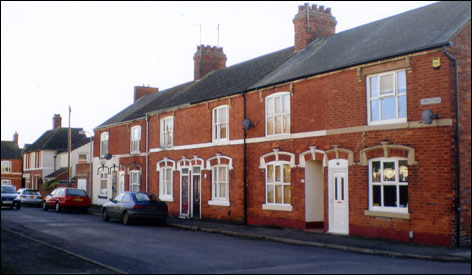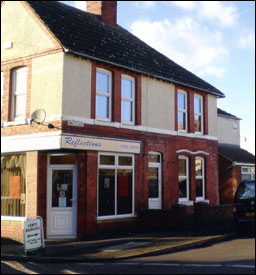|
|||
| Phyllis Brawn - edited by Stella Myers, 2007 |
|||
|
A Short History of Kings Place
|
|||
 |
|||
|
The following article is taken from Phyllis Brawn’s hand-written account of the occupants of
The row of flat-fronted, three-bedroomed terraced houses, whose front doors open straight onto the street, were built in 1904 by a Mr. Willmott, who lived in the first house in the row, no. 3. The street itself was at this time called Kings Road, off Robinson Road, but after the Quakers petitioned the Church of England authorities during the First World War to sell land to the Council in order to build new homes for poorer families, the new development, forming a semi-circle adjoining Portland Road, was given the name of Kings Road and the old terraced houses became Kings Place. In 1904 the first tenants of
The first occupants of no. 5 were a family named West who had two boys, one of whom used to take Phyllis out in her pram, but they emigrated to the
A family called Ward lived at no. 9. Both parents lived there until they died, when their daughter took over the tenancy. She had one son and later moved to
The next tenants were a Mr. and Mrs. Norris. A friend of Mr. Norris brought to his attention an advertisement in the Sunday newspaper which notified him of a legacy left to him by his estranged father in
After this a couple called Elsie and Cyril Colbert moved into no. 9. Elsie and Phyllis Brawn had already been friends and work colleagues for forty years before they became neighbours. The latest occupants, since about 1980, have been David and Jeanette Brawn and their four boys. (No relation to Phyllis). The Bailey family were the first to occupy no. 11. One of the children born in the house was their daughter Maggie who became a schoolteacher and taught in several local schools. She became Mrs. Priestly and had a very bright son called David who died tragically after gaining very high qualifications. The Baileys later bought a house in
The Pantling family came next, if Phyllis’s memory was correct, followed by Mr. and Mrs. Allen. Two children were born to them in the house, first May and then Charlie. May died aged seventy-seven in 1991. After standing empty until 1993 it was bought by Sally Myers, who restored its fittings to their original Edwardian style. It was for her that Phyllis Brawn wrote this history of Mr. and Mrs. O’Brian and their two daughters were the first occupants of no. 13. One daughter, who became Mrs. Selby, probably took over the house later, as Phyllis mentions that she was a great favourite with all the children and always made them welcome at the house. Mrs. O’Brian had a great friend who gave birth to a son called Harry Edin. She died when he was three weeks old and on her deathbed asked Mrs. O’Brian to adopt him. He went into the Army during the First World War and Phyllis remembered him coming home on leave from
The second and last occupant of no. 13 during Phyllis’s lifetime was Mrs. Indyk, a Polish lady who was very deaf, so communication with her had to be kept short and conducted mostly in sign language.
It was probably at about this time that the first house was sold, to Mr and Mrs Riddle who lived there for over thirty years. The shop on the corner of
Over one hundred years have passed since the first houses were built at Kings Place; its many and varied occupants having lived through two world wars and the rise and decline of the town’s shoe industry, but even today the road remains a quiet backwater in a busy and growing town. Except for a few new windows and doors it remains very similar to its original appearance and with the addition of new bathrooms, kitchens and indoor toilets the basic design of these simple Victorian terraced houses still meets the requirements of modern-day living in the twenty-first century. |
|||
